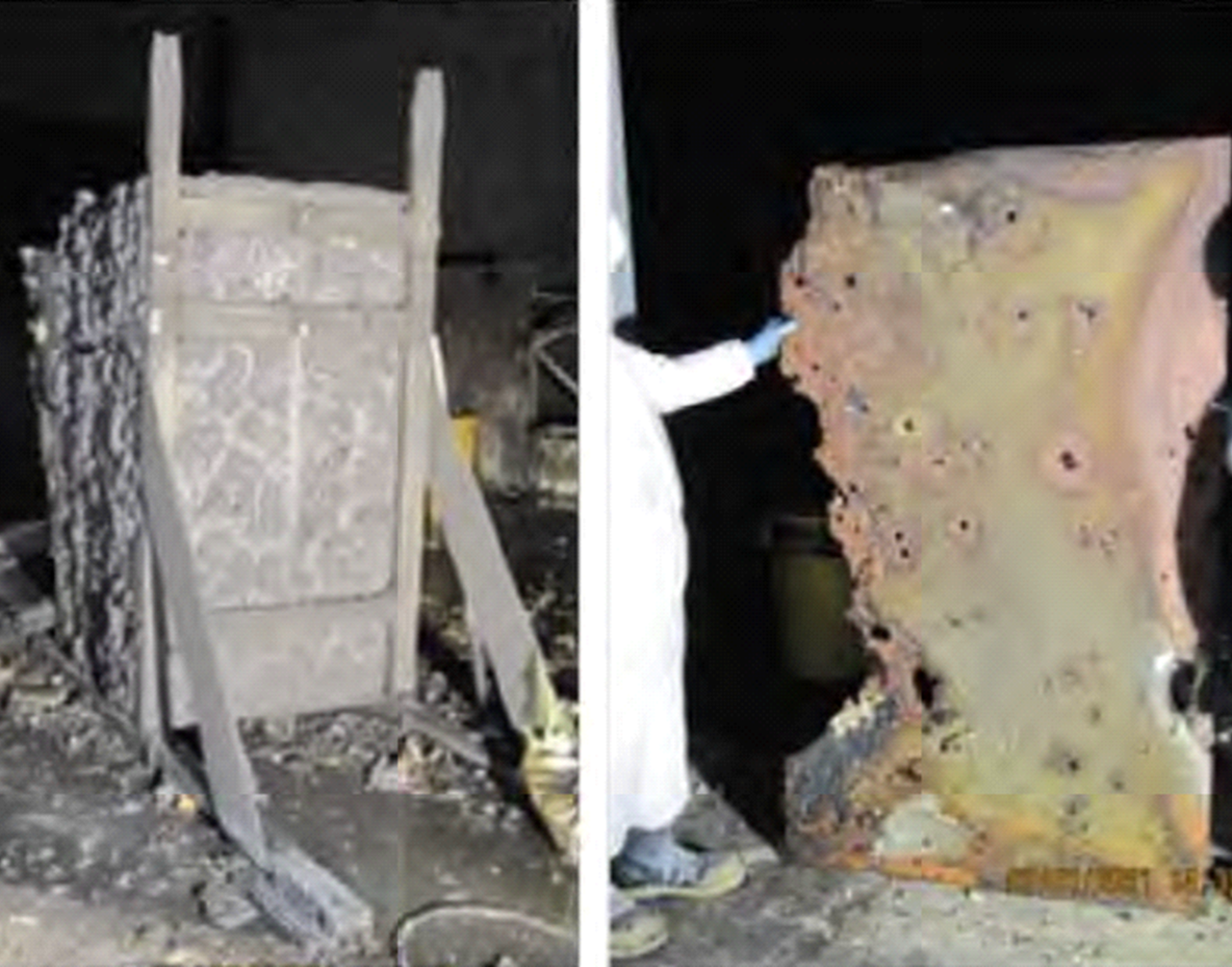Tri-Valley CAREs recently uncovered the details of a serious accident at Livermore Lab’s Site 300 High Explosives Testing Facility outside of Tracy, California. Upon detonation, an over-pressurized experiment exploded beyond expectation and caught fire in the Contained Firing Facility (CFF), exposing several dozen panicked workers to toxic and radioactive smoke as they evacuated. The toxic smoke was released into the environment through the facility stack into to open air. The accident resulted in a many months long shutdown of the CFF. Read on for more detail…
In March of 2022, Tri-Valley CAREs submitted a Freedom of Information Act request asking for more information about an Occurrence Report that mentioned that there was an “incident” at Lawrence Livermore National Laboratory’s (LLNL) Site 300 High Explosives Testing Range just outside of Tracy, California in 2021.
It took filing litigation to push the Lab’s managing agency, the National Nuclear Security Administration to produce any responsive documents about the accident, but finally Tri-Valley CAREs recently received responsive documents providing some details about the accident, including some first-hand, employee accounts that are harrowing.
On June 10, 2021 a classified Lithium Hydride experiment, involving other undisclosed hazardous and/or radioactive material, was detonated at Site 300’s indoor Contained Firing Facility (CFF). Site 300 is authorized to conduct explosions in the CFF up to a certain limit; it is also authorized to conduct even bigger detonations in the open air on its “firing tables.” Conducted inside an experiment “chamber,” the experiment “induced two types of High Explosive driven experiments” with classified material. The documents later reveal that the accident resulted in the potential for both beryllium and depleted uranium exposure (among other classified materials), so workers could have been exposed to both toxic and radioactive smoke. (Particles of beryllium and depleted uranium are both highly toxic when inhaled.)
The documents reveal that 33 personnel were in the room at the time of the experiment and explosion. 15 were in the Vault Type Room, one was in the Capacitor Discharge Unit and the others were in the control room. Worker testimonials chronicle the moments after the initial experiment detonation.
They describe a noise, “like a tea kettle boiling louder and louder. Then heard a pop like a seal broke, and smoke came through the platform.” Another described, “There was a pop and then the Vault Type Room filled with smoke. The smoke traveled faster than we did. I was in smoke the entire way out. It smelled like burnt rubber.” Another said, “I think we need to get out!… and then [I] saw greyish-brown smoke coming in from the floor.” And another mentioned, “Upon evacuation, [I] received a lungful of bad air.” The documents also state that “Evacuees also saw smoke coming out the stack upon exiting the facility.”
While the documents do not specifically provide information about the effect of the accident and the smoke on the surrounding environment, it is noted that “Environment, Safety and Health technical services reported this incident to the San Joaquin county Office of Emergency Services” based on there being a “reasonable belief the release or threatened release poses significant present or potential hazard to human health and safety, property or the environment.”
A total of 17 workers (half of the affected employees) provided bioassays in the days following the accident. Inside the facility, detectable levels of beryllium were found in the camera room, short chase, Vault Type Room, and the Capacitor Discharge Unit. Additionally, elevated radiation levels were detected in the Vault Type Room, and the Capacitor Discharge Unit 7 days after the accident. (Note: Our FOIA response did not include results of the worker bioassays, though they are presumably completed by now.)
The cause of the accident is explored in the documents, which are attached, and the conclusions are vague. In essence, they believe some of the components present in the chamber were combustible and reacted; causing a pressure build up in the chamber that then exploded and caught fire.
The Lab has a many decades long history of contaminating the environment at Site 300, albeit mostly from programmatic activities, (like detonating high explosives in the open air on the firing tables) not from accidents. The Environmental Protection Agency added Site 300 to the Superfund list in 1990 and it has been actively cleaning up contamination in various areas of the site since then. Depleted uranium contamination at the site is an especially complicated problem around the firing tables where it was used, and in some cases continues to be used. Tri-Valley CAREs has monitored the cleanup at Site 300 all along the way. The Lab is currently receiving a 10% budget cut for cleanup, despite the many decades left to achieve cleanup to the legal standards.
While Tri-Valley CAREs preference would be for Site 300 to cease any high explosive blasting operations in the future, moving blasts into the Contained Firing Facility, and off of the open air firing tables, is preferable for protecting human health and the environment. Though as this accident shows, it does potentially raise the risk for workers who are in the building during the blasts.
This accident resulted in a many months shut down of the Contained Firing Facility, though it is our understanding that it is back in operation. Our staff will be following up on the status of the facility and of the potentially exposed workers in our regulatory meetings with the Lab, the EPA and other regulators in the coming months. Stay tuned.
Click here for the Lab documents detailing the accident…
